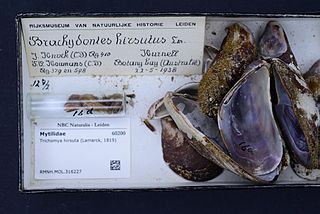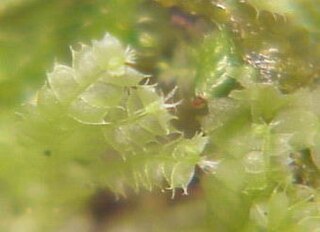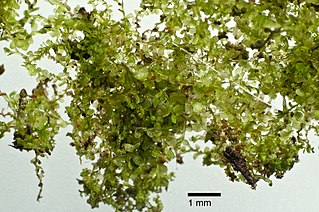
Water pollution is the contamination of water bodies, usually as a result of human activities, so that it negatively affects its uses. Water bodies include lakes, rivers, oceans, aquifers, reservoirs and groundwater. Water pollution results when contaminants mix with these water bodies. Contaminants can come from one of four main sources: sewage discharges, industrial activities, agricultural activities, and urban runoff including stormwater. Water pollution is either surface water pollution or groundwater pollution. This form of pollution can lead to many problems, such as the degradation of aquatic ecosystems or spreading water-borne diseases when people use polluted water for drinking or irrigation. Another problem is that water pollution reduces the ecosystem services that the water resource would otherwise provide.

The Mexican free-tailed bat or Brazilian free-tailed bat is a medium-sized bat native to the Americas, so named because its tail can be almost half its total length and is not attached to its uropatagium. It has been claimed to have the fastest horizontal speed of any animal, reaching top ground speeds over 99 mph (160 km/h). It also flies the highest among bats, at altitudes around 3,300 m (10,800 ft).

Ficus elastica, the rubber fig, rubber bush, rubber tree, rubber plant, or Indian rubber bush, Indian rubber tree, is a species of flowering plant in the family Moraceae, native to eastern parts of South and Southeast Asia. It has become naturalized in Sri Lanka, the West Indies, and the US state of Florida. Despite its common names, it is not used in the commercial production of natural rubber.

The Paraíba do Sul, or simply termed Paraíba, is a river in southeast Brazil. It flows 1,137 km (706 mi) west to northeast from its farthest source at the source of the river Paraitinga to the sea near Campos dos Goytacazes. The river receives its name when it meets the river Paraibuna at the Paraibuna dam.

Pallavicinia is a globally distributed genus in the liverwort family Pallaviciniaceae. thallus is simple contain a strong hair like midrib. thallus area except midrib made out of one layer of cells. thallus is dark green in color and it is very small. thallus is gametophyte. it is the dominant plant. grows in shady and moist environments. thallus is green or pale green in color. 3-6cm in long and 4-5mm broad. margins are entirely or irregularly lobed. most species are distributed in tropical or sub tropical or temperate regions. can be found places like moist soil covered rocks, banks of fresh water streams. female thallus lobes with cup shaped fringed receptacles.
Alto Purús National Park is a national park in the Amazon rainforest of Peru, established in 2004. It covers an area of 2,510,694.41 ha (9,693.85 sq mi) in the provinces of Purús (Ucayali), Tahuamanu and Tambopata.

Urban runoff is surface runoff of rainwater, landscape irrigation, and car washing created by urbanization. Impervious surfaces are constructed during land development. During rain, storms, and other precipitation events, these surfaces, along with rooftops, carry polluted stormwater to storm drains, instead of allowing the water to percolate through soil. This causes lowering of the water table and flooding since the amount of water that remains on the surface is greater. Most municipal storm sewer systems discharge untreated stormwater to streams, rivers, and bays. This excess water can also make its way into people's properties through basement backups and seepage through building wall and floors.

Environmental effects of mining can occur at local, regional, and global scales through direct and indirect mining practices. Mining can cause erosion, sinkholes, loss of biodiversity, or the contamination of soil, groundwater, and surface water by chemicals emitted from mining processes. These processes also affect the atmosphere through carbon emissions which contributes to climate change. Some mining methods may have such significant environmental and public health effects that mining companies in some countries are required to follow strict environmental and rehabilitation codes to ensure that the mined area returns to its original state.

Trichomya is a monotypic genus of marine bivalve molluscs in the family Mytilidae, the mussels. The only species is Trichomya hirsuta which is endemic to southern and eastern Australia. Its common names include the hairy mussel, the greenling and the kelp greenling.
Riccia crassifrons is a species of liverwort belonging to the family Ricciaceae.
Fissidens elegans is a species of moss belonging to the family Fissidentaceae.
Fissidens serratus is a species of moss belonging to the family Fissidentaceae.

Monoclea gottschei is a species of liverwort belonging to the family Monocleaceae.
Rhodobryum huillense is a species of moss belonging to the family Bryaceae.

Lophocolea bidentata is a species of liverwort belonging to the family Lophocoleaceae.
Noteroclada confluens is a species of liverwort belonging to the family Noterocladaceae.
Plagiochila laetevirens is a species of liverwort belonging to the family Plagiochilaceae. It is common as an epiphyte in the dryland forests of Guyana.

Clasmatocolea vermicularis is a species of liverwort belonging to the family Lophocoleaceae.

Symphyogyna is a genus in the liverworts in the family Pallaviciniaceae. Approximately 123 species are recognized. Although World Flora Online only accepted 46 species.
Symphyogyna brongniartii is a species of liverwort belonging to the family Pallaviciniaceae.











